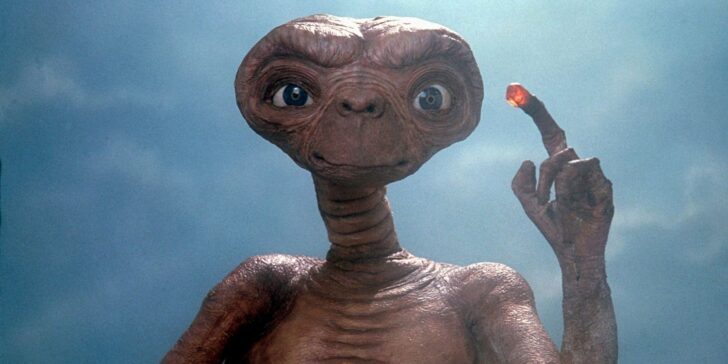E.T was possibly the first alien character that viewers truly adored.
His cute and curious looks and gentle temper warmed the hearts of E.T fans all over the world.
But where did the character concept come from, and how was E.T even made?
Here are seven extraordinary facts about E.T.
Three different actors voiced E.T.

Creating the voice of E.T. was challenging as when the film was produced in 1982, special effects were very limited.
The first voice of E.T. was Steven Spielberg himself, as he read from the script to help the children actors practice their scenes.
This was later replaced with the voice of Debra Winger; however, this didn’t make the final cut.
The main voice of E.T. was Pat Welsh, who was not an actor at the time but had the perfect deep raspy voice that Spielberg had envisioned for E.T.
She was a chain-smoker and claimed to have smoked two packs of cigarettes a day to maintain her rough voice whilst recording for E.T.
Her voice was mixed with the sounds of animals breathing for the final edit.
E.T. was produced into a puppet to use on-screen.
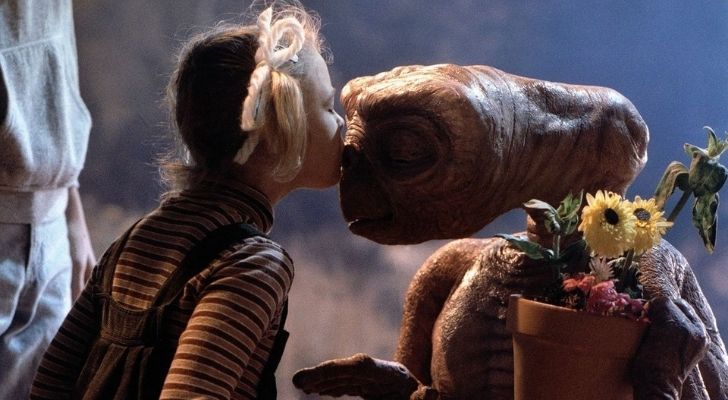
In the scenes where E.T. was not represented in a suit with an actor, E.T. was essentially a puppet.
The puppet of E.T. was a logistical nightmare but created a lifelike alien for scenes where E.T. stayed in one place.
The robotic puppet was bolted into the floor so that the cables could be fixed in place but hidden.
However, Spielberg had to hire Caprice Rothe, a mime artist, to control E.T.’s hands.
Rothe provided smooth, lifelike hand gestures, unlike the sharpness of the robot.
She wore gloves that were the same texture as E.T.’s skin so her hands would blend in with the rest of the puppet.
Three different actors were hired to play E.T.
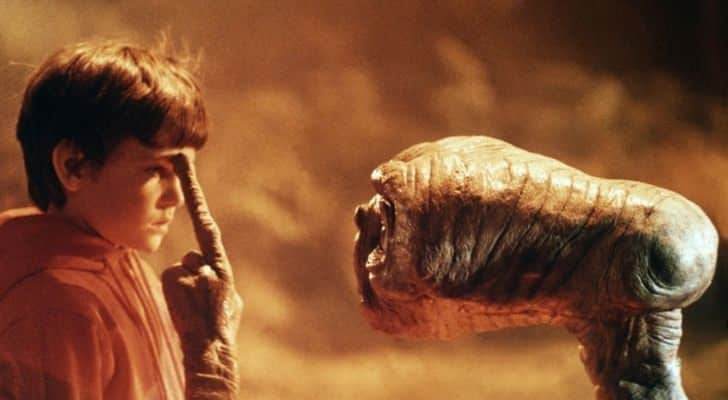
There were many versions of E.T. created to suit different scenes.
For full-body shots that showed E.T. walking around, two actors were hired.
Tamara de Treaux and Pat Bilon, both around 2 ft 10 in (86 cm) tall, wore E.T. suits for the scenes where the alien is walking around.
As well as these two actors, 12-year-old actor Matthew DeMeritt, born with no legs, played E.T. in scenes where the alien fell over.
DeMeritt had a specially designed E.T. suit that allowed him to walk on his hands.
E.T.’s favorite candy was supposed to be M&Ms.
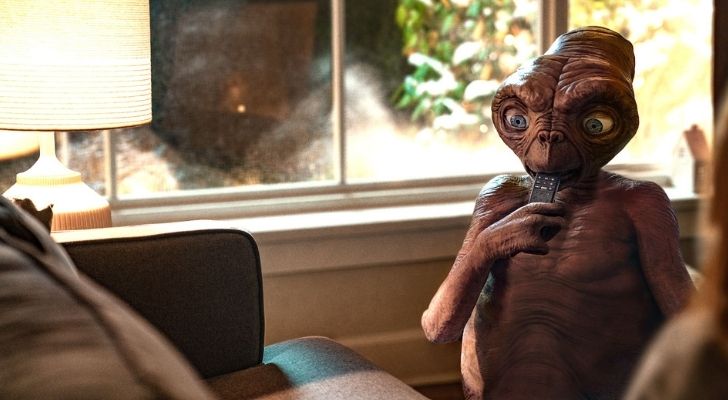
In the movie, E.T.’s favorite candy is Reese’s pieces, and it is used to lure him back home, but Spielberg wanted it to be M&Ms.
The Mars Corporation, which owned M&Ms, refused to let Spielberg use their candy as E.T’s favorite treat, so Spielberg approached Hershey’s instead.
Hershey’s were launching their Reese’s pieces, so they saw an opportunity to market their new product.
Hershey’s paid $1 million to Spielberg for promotional rights.
E.T. was released on June 11, 1982, and within two weeks of the premier, Reese’s pieces sales rose by 65%.
There is a wax figure of E.T. in Madame Tussauds.

The famous waxwork museum created five wax figures of E.T. to celebrate 30 years since the movie’s release.
Using information sourced from the artists behind E.T., a clay model was made.
This was then used to create the wax mold.
The wax mold was then painted with oil paints to produce a life-like recreation of E.T.
E.T. has no specified gender.
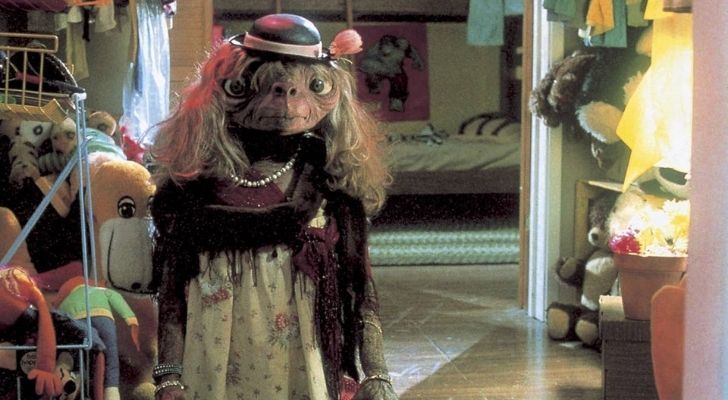
There are key details about E.T.’s background that aren’t shared in the movie and therefore left to the audience’s interpretation.
An interview with Spielberg revealed that the character of E.T. was intended to be genderless, more like a plant than a mammal.
There is also no time or date given to suggest when E.T. was born or created.
However, the novelization of the movie stated that E.T. was over ten million years old.
The main inspiration for E.T.’s look came from a painting.
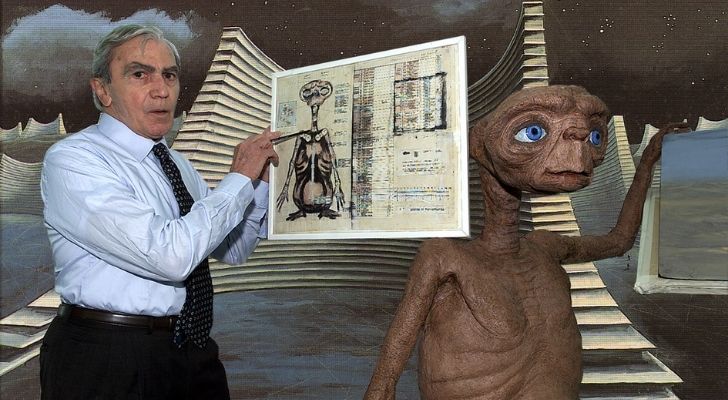
The character of E.T. was supposed to be an alien that didn’t look like aliens had before.
E.T. was to be friendly and approachable, rather than scary and gruesome.
The main inspiration for his looks came from the painting “Women of Delta” painted by special effects artist Carlo Rambaldi in 1952.
The painting showed shriveled stubby figures with long necks and elongated heads.
Rambaldi worked with Spielberg on designing E.T., and when Spielberg saw this painting, he knew this was the base to forming the alien that was E.T.
Spielberg spent lots of time studying imagery and photographs of people who suffered from depression to help him create E.T.’s image.
E.T. was the first alien that the audience could sympathize with and fall in love with.
His kind-hearted and innocent character created a new take on aliens and opened our minds to what could be out there.
E.T. was not an easy character to create, but with dedication and an array of actors, mime artists, and voice actors, the perfect alien was formed.

